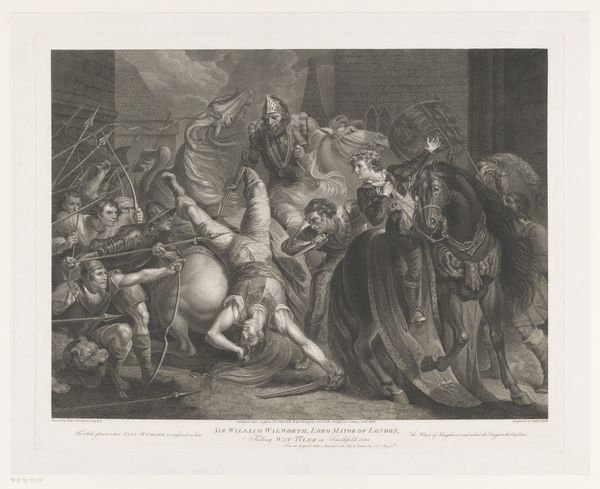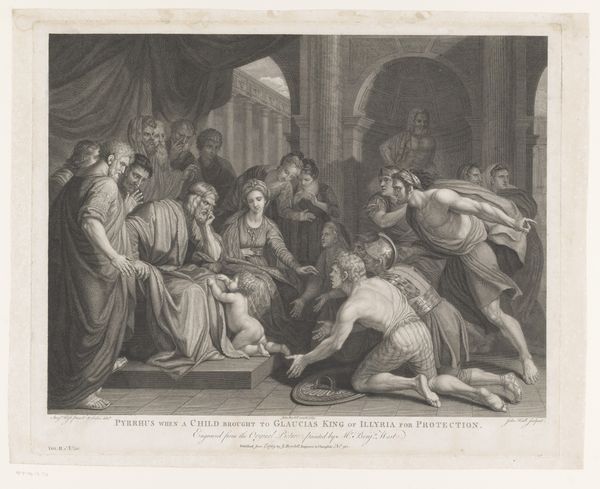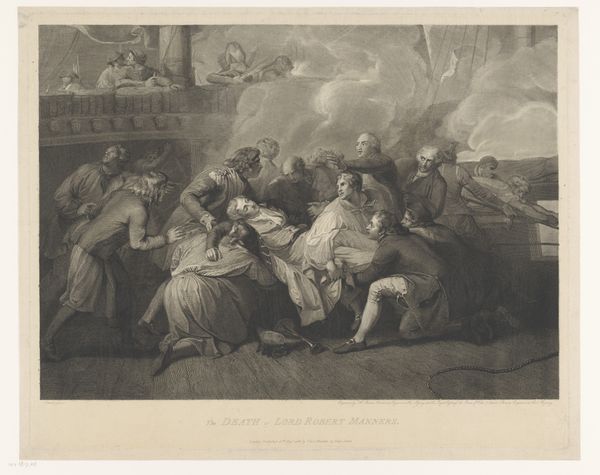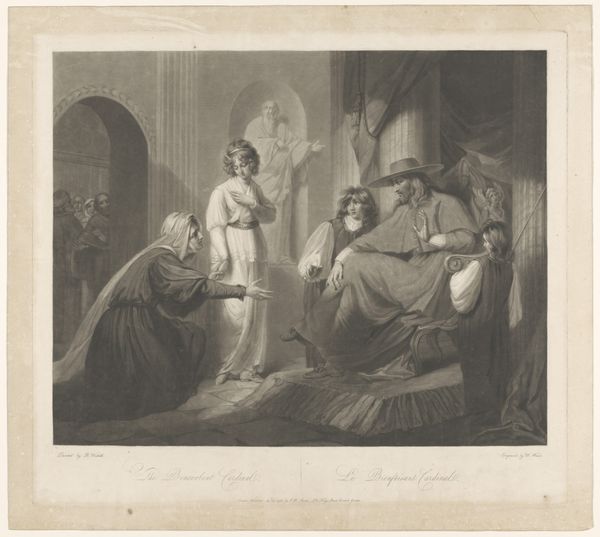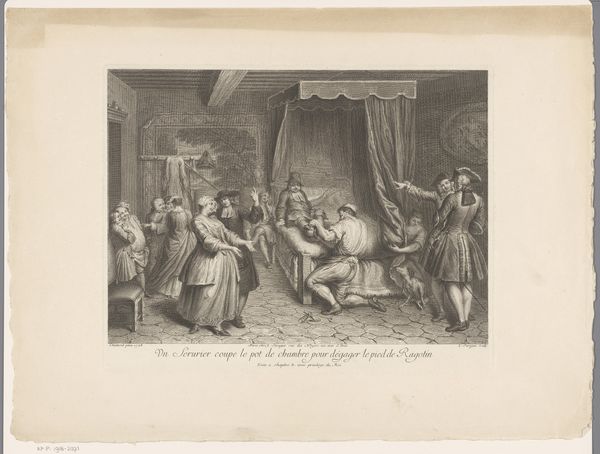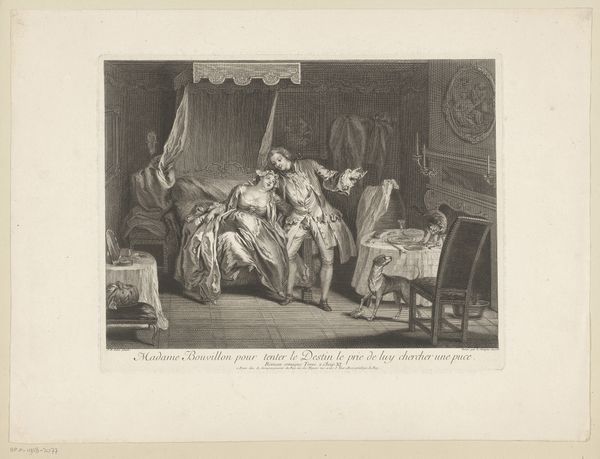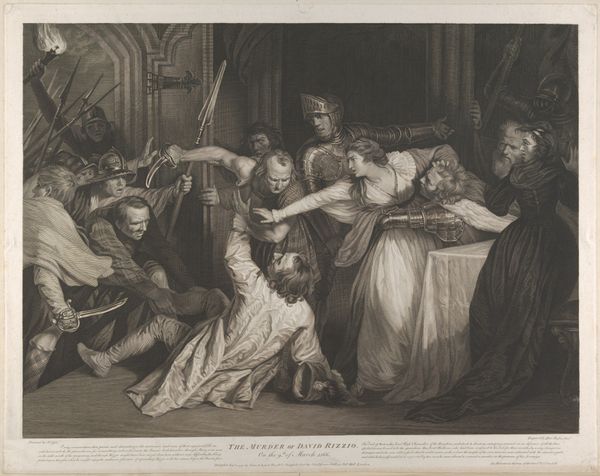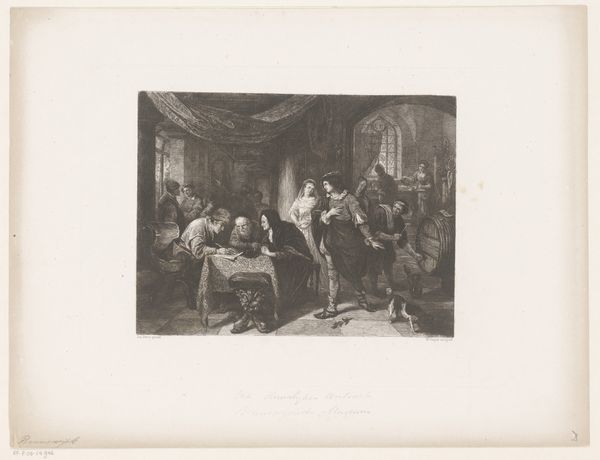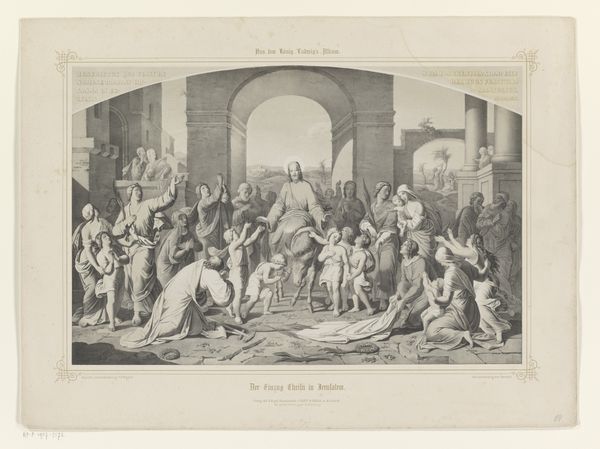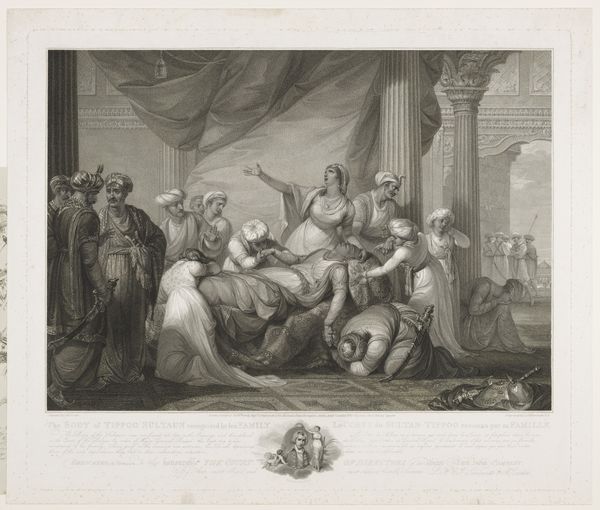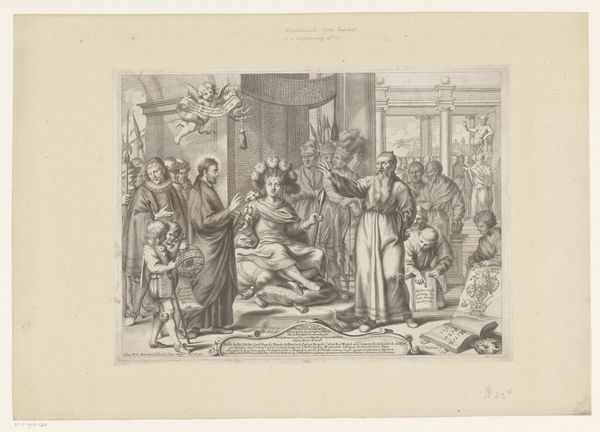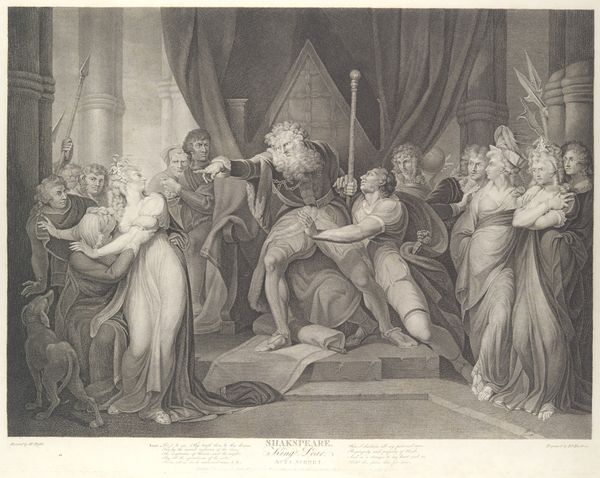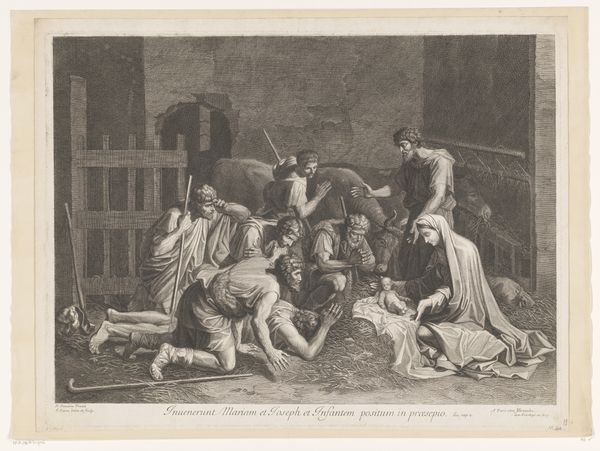
print, engraving
#
print photography
#
medieval
#
narrative-art
# print
#
history-painting
#
engraving
Dimensions: height 497 mm, width 722 mm
Copyright: Rijks Museum: Open Domain
Editor: This is “Gevangenneming van paus Paschalis II door keizer Hendrik V,” or “Imprisonment of Pope Paschal II by Emperor Henry V,” an engraving made between 1862 and 1870 by Wilhelm Oelschig. It’s a dramatic scene, a clear power struggle being depicted. What strikes you when you look at this? Curator: The immediate thing I see is a staged, deliberate assertion of power. Given its historical context, the image enters a larger debate about secular versus religious authority. It seems like a literal and symbolic interpretation of their relationship; that of an emperor to a Pope, right? How do you feel that this visual narrative touches on issues of domination, identity and social hierarchy in the artwork? Editor: It's almost performative, the way the Emperor is positioned, pointing and commanding. What’s the significance of depicting this historical power struggle? Curator: Consider the period when Oelschig created this print. The rising tide of nationalism often led to revisiting historical flashpoints and mythologizing national identity. This scene encapsulates the Investiture Controversy, where the very identity of the Holy Roman Emperor hinged on papal legitimacy. The composition even serves to question the visual rhetoric of power—who gets to depict whom, and how? In terms of the controversy depicted, what do you feel this reveals about Oelschig's political affiliations at the time? Editor: It's interesting to think about how historical events get filtered and framed depending on the present moment. And the choice to depict this imprisonment certainly seems loaded. I guess that studying such historical conflicts allows us to challenge current imbalances and stand up to authority, regardless of one’s beliefs. Curator: Exactly. Recognizing that interplay—how history and power get represented and reproduced—is what can enable us to challenge it more effectively today. This has been extremely interesting. Thank you for the interesting exchange. Editor: My pleasure! Thank you. I learned so much, particularly regarding historical context in shaping art and vice versa.
Comments
No comments
Be the first to comment and join the conversation on the ultimate creative platform.
